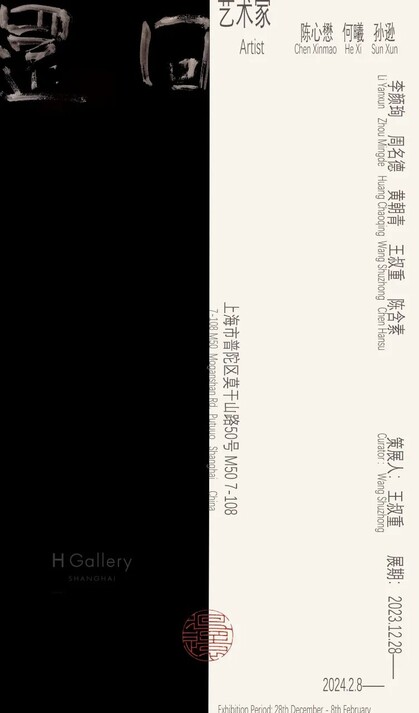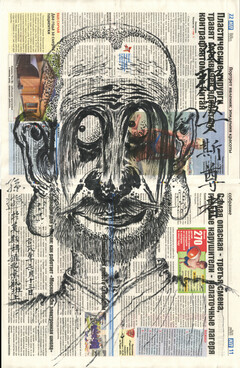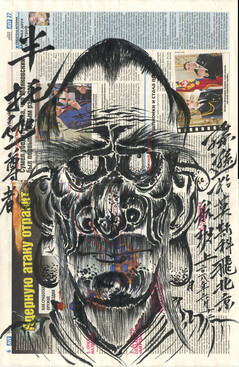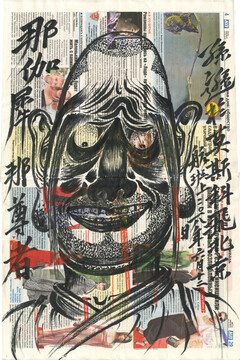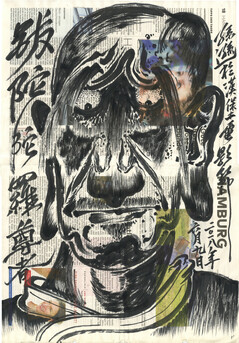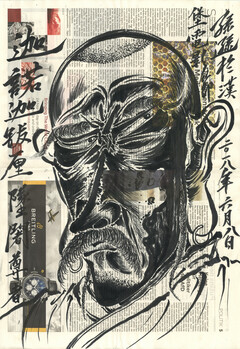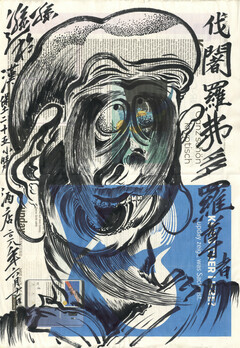Group Exhibition H Galllery, M50, Shanghai, No.50, Moganshan Rd., 7-108
"Return and Present: The Distant Horizon You Can See"
by Wang Shuzhong
Recently, it has been quite peculiar, meeting Professor Chen Xinmao and then consecutively meeting Professor He Xi. Our conversations revolved around contradictions. Contradictions? They questioned the attempts I've made, asking if they are contradictory and inquired about my relationship with tradition, wondering if it's contradictory. Or they questioned my relationship with myself, pondering if it's contradictory. I seemed only able to answer with elusive words, appearing rather pale, uncertain if these are the answers to the questions.
This truly left me in a state of contradiction, prompting me to contemplate the role of contradictions in contemporary painting.
Due to our consecutive meetings, this sudden group exhibition—without any hesitation, I first invited Professors Chen Xinmao and He Xi. They are participants or contributors to the "85 New Wave" movement, having taken the forefront with an undeniable pioneering spirit. Both Professor Chen Xinmao's comprehensive use of materials and multidimensional exploration of ink in recent years, and Professor He Xi's injection of a more pronounced personal style into his stable progression, stand as successful examples of contemporary Chinese painting as a language of artistic expression.
One of the directions their works have taken in recent years is the contradiction toward tradition, especially the issue of ink and brush in tradition. Even today, our generation still emphasizes ink and brush, seemingly meaningless in retrospection, but actually returning in the chaos, introspecting blindly. Discussing ink and brush implies that ink and brush are no longer important, reaching their end. Mr. Wu Guanzhong once said, "Isolated ink and brush detached from specific scenes have zero value." Decades later, the significance of this statement needs no further explanation. Although he has passed away, history has arrived at today, and I feel more that—if one lacks ink and brush, just having the form, its value is also zero! The older generation is "returning" to ink and brush, while the younger generation is still with ink and brush. This seems to be an interpretation of the two words "return and present"! Of course, I initially thought that the two words "return and present" meant returning to the original state and coming to oneself and this era. The process of dealing with "return" and "present" also produced one piece after another.
After Chen Xinmao from the 50s and He Xi from the 60s had arrived, I then gathered those from the 70s and the majority from the 80s. Sun Xun is an artist I have newly appreciated and changed my perspective in recent years, especially his comprehensive integration of traditional art forms into a refined realm. Li Yanxun's familiarity with the color-based materials he often uses has resulted in a series of new works, forming a self-image based on traditional landscapes, opening up new territories. Zhou Mingde approaches naturalism while opening a channel to formal language. Huang Chaoqing's recent series evidently places more emphasis on visual effects rather than the original traditional symbolism, presenting a personalized expression in the context of survival in the present. Chen Hansu recombines her understanding and training in tradition and sketching into her creations. In recent years, Wang Shuzhong has gradually delved into his inner world, tending toward experimentation.
This exhibition is a glimpse of the achievements of contemporary Chinese painting in China and a presentation of the initial explorations of a new generation of painting. The return of contemporary art using ink as a medium and the increasingly diverse development of new traditional Chinese paintings are both moving toward their intrinsic belonging to ink and brush. This is precisely the common ground among the eight artists in this exhibition.
"Return and Present" is the name I chose for the exhibition, somewhat awkward and twisted, adhering to my own temperament. When discussing the exhibition pieces with He Xi, he immediately confirmed the one with the rabbit looking forward—an artwork I also preferred—"The Distant Horizon You See." I think this suits the initial intention of the exhibition process!
Artists, the visible distant horizon is just ahead.

